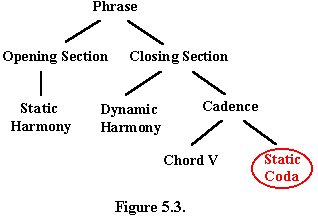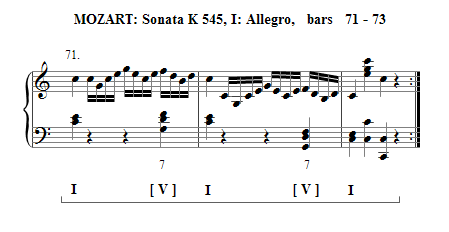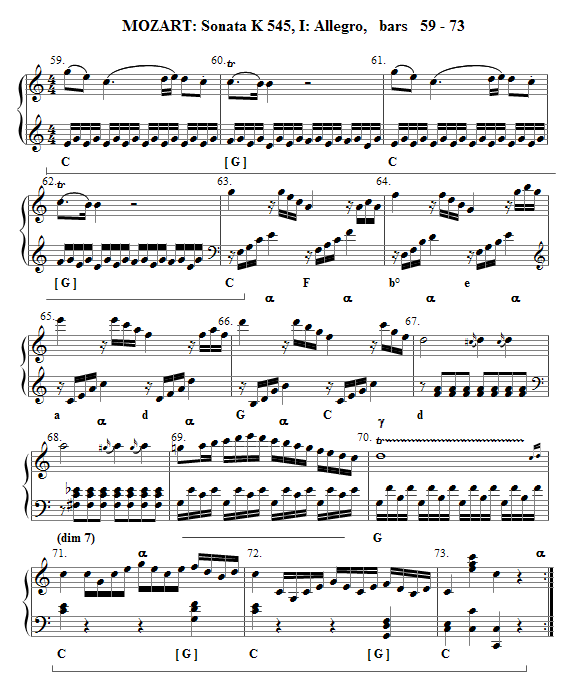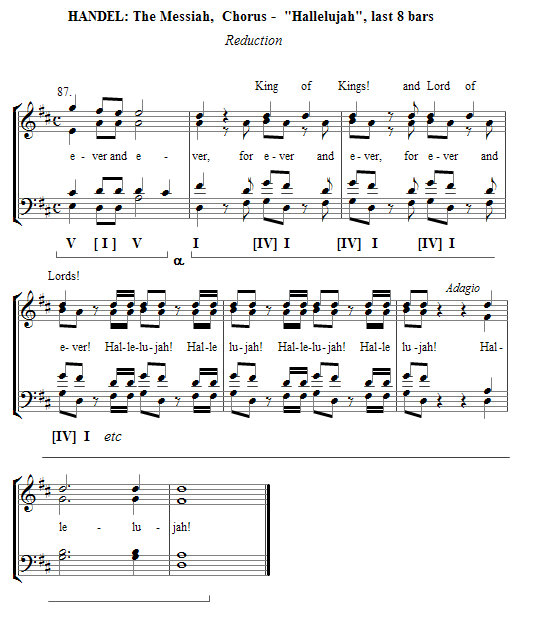
CHAPTER 5 (PART 3)
EXTENSIONS WITHIN THE BASIC STRUCTURE
The Static Coda
The tonic chord of the cadence can also be prolonged by the use of static harmony. This has the effect of extending the end of the musical phrase. This I will refer to this as a static coda.
All the techniques explained in the previous chapters for prolonging the tonic in the opening section static harmony can be applied to the prolongation of the tonic chord in the cadence. These are:
- Any combination of voice leading elaborations.
- Static harmony deploying a variety of auxiliary chords, interspersed between tonic chords.
- The use of a tonic pedal note underscoring the static harmony.
- The use of passing chords filling in between the tonic and auxiliary chords.
- The use of linear progressions filling in between the tonic and auxiliary chords or successive tonic chords.
Whilst similar to the static harmony in the opening section of the syntactic structure, in practice, static codas are often simple oscillations such as I [ V ] I or I [ IV ] I. Static Codas are very common but occur most frequently at the ends of main sections in a piece of music.
The following figure shows the form of a complete phrase extended by a static coda:
b) The Static Coda

The static coda is similar to the static harmony of the opening section of the standard phrase structure but is part of the cadence and therefore performs a different function. It often reprises melodic ideas from opening section static harmony. As for opening section static harmony, in the static coda the tonic sometimes takes on a minor 7th when moving to an auxiliary chord IV.
In the following example from the Mozart: Sonata K545, the final chord I is prolonged by a simple I [ V ] I chord oscillation. This is a common type of static coda, especially in the classical period.

Following is a full description of this phrase:

The figure above shows the syntactic structure for this phrase. It forms the repeat of the second subject in the recapitulation from the first movement of the Sonata.
- Bars 59. To 63: Opening Section static harmony: I [ V ] I, repeated. The extent of the static harmony is indicated by the horizontal bracket.
- Bars 63 to 68: Closing Section dynamic harmony. This completes a full cycle of 7 α progressions followed by I - II - V (one γ and one α progression) The II to V ( D minor to G dominant) (α) progression is elaborated by a diminished 7th chromatic passing chord as indicated in the analysis. The chromatic movement is F - F # - G in parallel with D - E-flat - E-natural.
- Bars 69 and 70: The dominant chord is prolonged by a full bar cadential 6 4 appoggiatura chord. We could indicate this as a (short) dominant prolongation in the chart, in this example, the cadential 6 4 chord is indicated by a horizontal line preceding the dominant chord onto which it resolves..
- Bars 71 to 73: Cadential chord I is prolonged by a three bar static coda made up of I [ V ] I static harmony repeated. The extent of the Static Coda is indicated by the horizontal bracket.
Static codas based on I [ IV ] I static harmony are also very common, especially in church music. As for the opening section static harmony, auxiliary chord V suggests secular music and IV suggests sacred music. A good example of this is the last few bars of Handel: Hallelujah Chorus. This example contains a brief dominant prolongation of one bar duration followed by a static coda of 7 bars involving 8 repeats of the I [ IV ] I pattern.

The IV to I chord succession (repeated 8 times in this example) is sometimes referred to as a plagal or amen cadence. However, this is not in reality a cadence, merely the result of the I [IV] I static harmony prolonging the cadential tonic chord. The true cadence in this example is the movement from the last chord of the brief dominant prolongation in bar 87 to the first chord of the static coda starting in bar 88. A true plagal cadence only occurs when the syntactic V - I is replaced by IV - I.
To avoid any confusion it should be made clear that there is no relationship between a static coda and a formal coda. A static coda is a syntactic element and performs a syntactic function in a musical phrase. The only purpose of the expression static coda is to explain the syntax of the musical phrase. A formal coda may contain a whole syntactic phrase or more.

